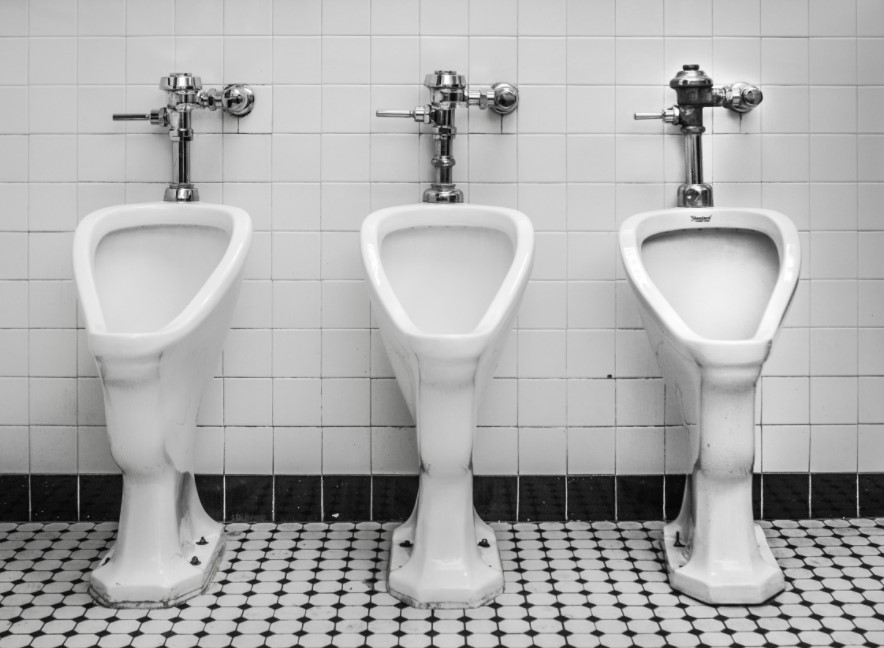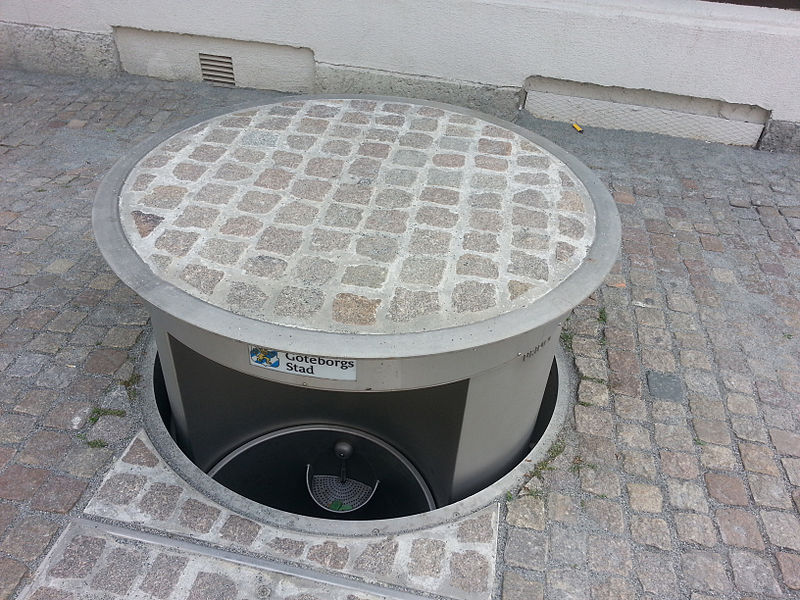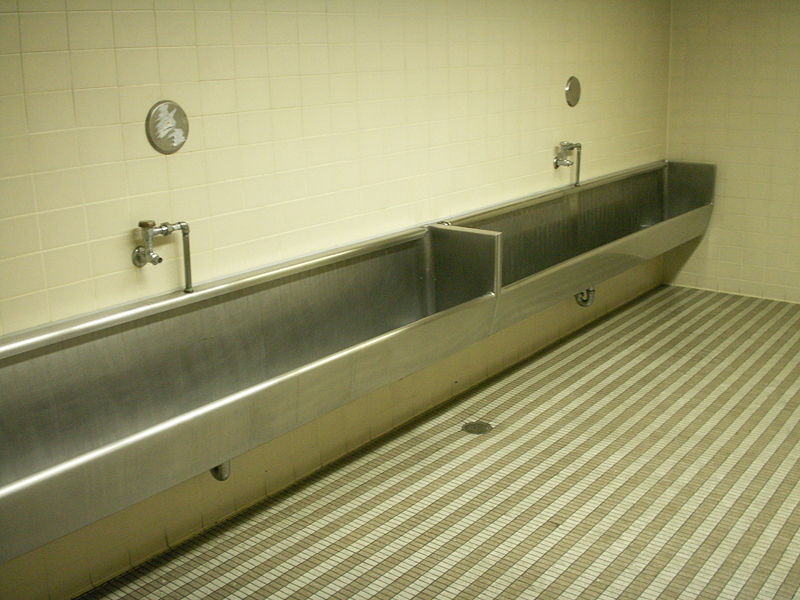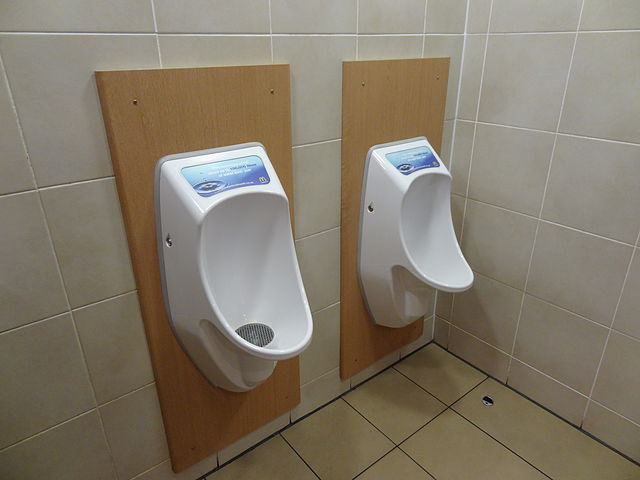Urinal
Contents |
[edit] Introduction
A urinal is a sanitary plumbing fixture designed for urination only. It is typically used in the standing position.
Urinals are most frequently placed in male public toilets, in particular those found in commercial or institutional settings. However, some homeowners have opted to instal urinals as a method of saving water. Female urinals are available, although they are not as popular or common.
[edit] History
While public toilets and trough urinals go back to ancient times, the first pissiors (also known as a vespasienne) were introduced in Paris in the 1830s. These simple outdoor structures were meant to reduce public urination in the streets. The enclosed booths offered varying levels of privacy and were only meant to be used by men.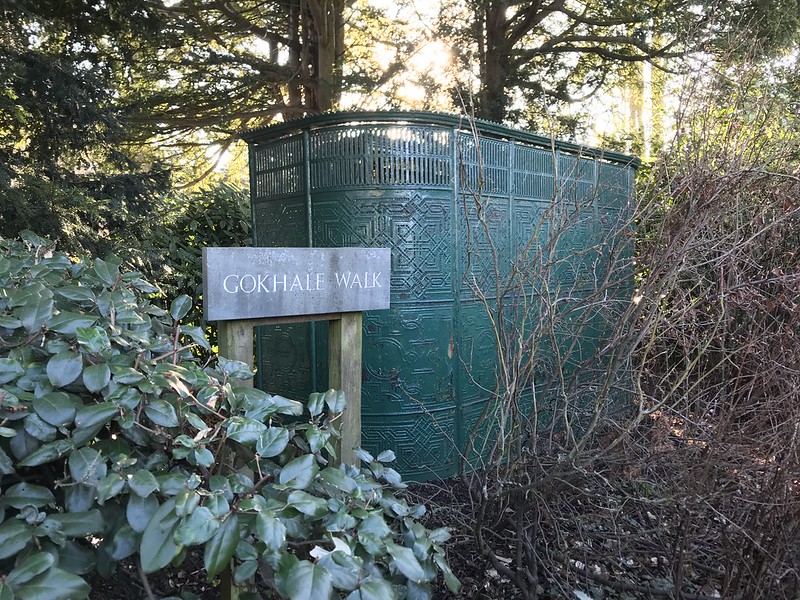
Twickenham pissoir.
The popularity of pissiors spread to other parts of Europe. In the Netherlands and the UK there are still several street urinals in cities.
Some modern adaptations of street urinals now disappear underground during daylight hours only to emerge in the evenings.
In some locations, older disappearing urinals have been replaced by self contained non-gender specific street toilets (which may also disappear underground).
[edit] Patented urinals
In 1866, Andrew Rankin patented the first upright flushing urinal. The devices became popular during the industrial revolution as factories - and populations - grew in American cities.
The urinal required less space, so several could be installed in a small area in the factory. The urinal was also thought to improve productivity, since workers tended to take less time using a urinal than a toilet.
[edit] Configurations
Modern urinals are produced for users of different heights and mobility requirements. Some extend to the floor to serve the same purpose.
Trough urinals - rather than individual units - are sometimes found in buildings (such as entertainment facilities, sporting venues, convention centres and so on). These accommodate large numbers but lack privacy.
For more privacy, individual urinals are separated by dividers, although they would not typically be placed inside toilet stalls.
For purposes of sanitation, many public urinals have some type of guard device to prevent solid matter from blocking pipes. The guard may also have a deodorising urinal cake to help minimise odours.
[edit] Flushing options
There are several flushing options for urinals. These include:
[edit] Manual
The urinal has a button, lever or foot pedal for users to activate the flush. A dual-flush handle uses half the water when pulled up. This is an older flushing technique that was popular in the United States.
[edit] Automatic
Timed flushes occur at regularly scheduled intervals. To prevent water being wasted for unnecessary flushing, this option is sometimes controlled by an electronic sensor that can activate after the urinal has been used. There are some sensors that are activated by the light switch in the room; there are also passive infrared sensors that detect the presence of a user and activate when the person is no longer there. Manual override options for automatic flushing systems are also available.
[edit] Door regulated flush
This is another method of automatic flushing that is activated only after the urinal is used. In this system, a switch is installed in the frame of the door and activates on all of the urinals whenever the door opens. There are also door regulated flushing systems that can be programmed to count the number of users and then activated when that number has been reached.
[edit] Waterless urinals
Waterless urinals can be purchased from new, or existing urinals can be retrofitted to become waterless.
These devices capture the urine in a trap where it is dealt with in one of several ways:
- A sealant liquid captures and neutralises the urine.
- An outlet system traps the odour.
- A deodorising block is activated by the urine.
- A one-way valve closes once the urine has travelled into the trap.
[edit] Urinal requirements
The Workplace (Health, Safety and Welfare) Regulations 1992, Regulation 20, provides guidance regarding the need for urinals in public facilities. It states that “Suitable and sufficient sanitary conveniences shall be provided at readily accessible places.”
The approved code of practice provides the minimum numbers of facilities:
| Number of men at work | Number of toilets | Number of urinals |
| 1-15 | 1 | 1 |
| 16-30 | 2 | 1 |
| 31-45 | 2 | 2 |
| 46-60 | 3 | 2 |
| 61-75 | 3 | 3 |
| 76-90 | 4 | 3 |
| 91-100 | 4 | 4 |
The number of people at work shown in the first column refers to the maximum number likely to be in the workplace at any one time. These are pre-pandemic recommendations.
[edit] Related articles on Designing Buildings
- Approved Document G.
- Bathroom definition.
- Lavatory.
- Sanitary accommodation.
- Sanitaryware.
- Types of sanitary appliances.
- Water closet.
- Water consumption.
- Water Supply (Water Fittings) Regulations 1999.
[edit] External resources
Featured articles and news
RTPI leader to become new CIOB Chief Executive Officer
Dr Victoria Hills MRTPI, FICE to take over after Caroline Gumble’s departure.
Social and affordable housing, a long term plan for delivery
The “Delivering a Decade of Renewal for Social and Affordable Housing” strategy sets out future path.
A change to adoptive architecture
Effects of global weather warming on architectural detailing, material choice and human interaction.
The proposed publicly owned and backed subsidiary of Homes England, to facilitate new homes.
How big is the problem and what can we do to mitigate the effects?
Overheating guidance and tools for building designers
A number of cool guides to help with the heat.
The UK's Modern Industrial Strategy: A 10 year plan
Previous consultation criticism, current key elements and general support with some persisting reservations.
Building Safety Regulator reforms
New roles, new staff and a new fast track service pave the way for a single construction regulator.
Architectural Technologist CPDs and Communications
CIAT CPD… and how you can do it!
Cooling centres and cool spaces
Managing extreme heat in cities by directing the public to places for heat stress relief and water sources.
Winter gardens: A brief history and warm variations
Extending the season with glass in different forms and terms.
Restoring Great Yarmouth's Winter Gardens
Transforming one of the least sustainable constructions imaginable.
Construction Skills Mission Board launch sector drive
Newly formed government and industry collaboration set strategy for recruiting an additional 100,000 construction workers a year.
New Architects Code comes into effect in September 2025
ARB Architects Code of Conduct and Practice available with ongoing consultation regarding guidance.
Welsh Skills Body (Medr) launches ambitious plan
The new skills body brings together funding and regulation of tertiary education and research for the devolved nation.
Paul Gandy FCIOB announced as next CIOB President
Former Tilbury Douglas CEO takes helm.
UK Infrastructure: A 10 Year Strategy. In brief with reactions
With the National Infrastructure and Service Transformation Authority (NISTA).






